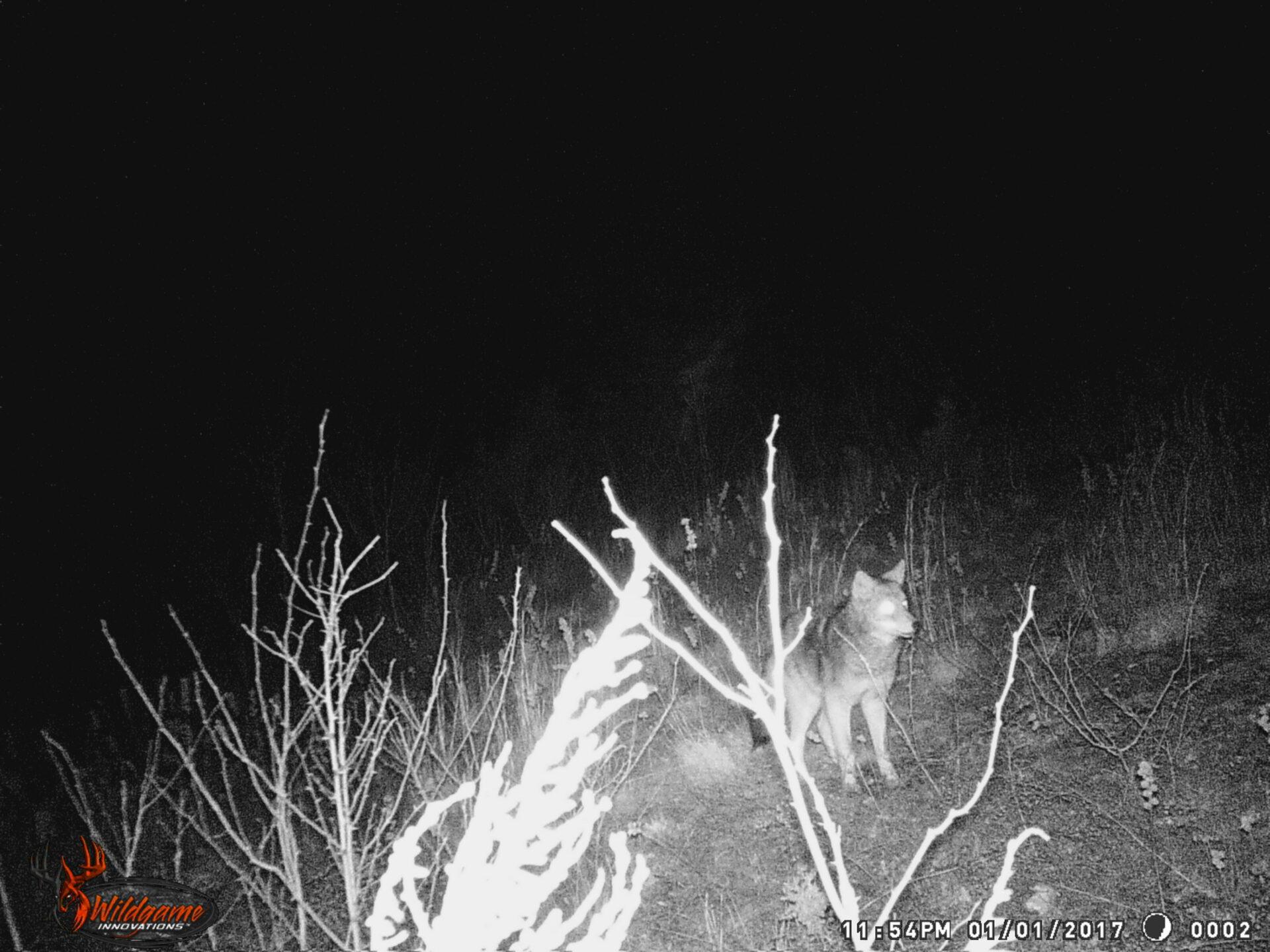Coyote or wolf? Animals in Massachusetts may be both

Eastern coyotes have been escalating recently, but as reports of the crafty and adaptable creatures have been increasing so have misidentifications as wolves. The recent sightings come during their breeding season, which runs from January to April but is at its height in mid-February.
To set the record straight, Marion Larson of the state Division of Fisheries and Wildlife said the animals are not wolves.
There has been one confirmed wolf sighting in the state since the 1800s, Ms. Larson said. That was in Shelburne Falls when state wildlife biologists were called out when several sheep were killed at a farm. The day after the investigation was conducted, they were called back to inspect what the farmer felt was a very large coyote. It proved to be a wolf that likely wandered down to Massachusetts from Canada.
The Eastern coyotes also may not be coyotes, but a hybrid of three types of canid subspecies.
“I don’t like the term coyote,” said Jonathan G. Way, a research scientist affiliated with the Clark University George Perkins Marsh Institute. Mr. Way said he prefers to call the animals coywolves and believes they may be a new species, rather than the Western coyote’s Eastern cousin.
Genetic testing of Eastern coyotes, or coywolves, found they are about 60 percent coyote, 30 percent Eastern wolf and 10 percent dog, Mr. Way said.
The coyote-dog connection is a more recent discovery.
“It was created in around 1919 in Algonquin Park in Southern Ontario, about 150 miles north-northwest of New York. Originally hybrid coyote-wolves, the animals picked up dog DNA sometime in the 1920s,” Mr. Way said.
Other than the visit by a wolf to Shelburne Falls, the only other place in New England where there have been confirmed wolf sightings is in Maine.
The reason people might think the coywolves are wolves is they are much larger than Western coyotes. The coywolves weigh 30 to 40 pounds, about 20 percent heavier than their counterparts out west. They are still significantly smaller than Eastern wolves, which are likely their cousins, and can weigh 80 pounds, Mr. Way said.
Gray, or Western wolves, may weigh up to 120 pounds, according to Mr. Way, and appear to be as large as a deer.
Not only are coywolves larger than Western coyotes, they are seen in many different colors. While Western coyotes are gray or tan colored, Ms. Larson said coywolves can have similar color or blond, as red as a red fox or even black.
“I’ve had an all-black coyote zipping through my yard,” she said.
Ms. Larson said she has also seen one that looked like a Husky dog. Coyotes reached Massachusetts in the 1950s and eventually spread across the state, reaching Eastern Massachusetts by the 1970s and populating throughout the state by the 1980s.
Ms. Larson said they may have even reached Martha’s Vineyard over sea ice.
Mr. Way said the animal has always been a hybrid, and its genetic connections with wolves and dogs may have allowed it to adapt to a variety of places.
Ms. Larson said there may be up to 10,000 Eastern coyotes or coywolves in the state and she is not surprised when she hears of a sighting.
“It is completely normal to see a coyote,” she said. “They are very adaptable animals.”
Ms. Larson said they can be found in just about any habitat in the state, including the streets of Worcester and Boston.
“We know there have been coyotes on Huntington Avenue, walking toward the Prudential Center, in Jamaica Plain, at Logan Airport, in Athol,” she said. “Why are they in these places? There is food and shelter.”
Ms. Larson said coyotes will eat meat, but they will also eat bird food, suet and just about anything they can eat. She said people who leave trash bags on the side of the roads are just providing coyotes with an all-you can eat buffet.
“They’re omnivorous,” she said.
The adaptability to different food sources allows the animals to live in a wide range of habitat. They are often in close proximity with people.
“People also ask if are they dangerous to us,” Ms. Larson said. “They’re certainly going to view your small pet as a meal. We are also in the midst of mating season and coyotes are going to be more aggressive with peoples’ dogs.”
But statistics do not show Eastern coyotes or coywolves are dangerous to humans. Ms. Larson said there have been only five attacks on humans in Massachusetts since the 1950s. A sixth incident is also being investigated, but she said it is a fraction of the number of dog attacks on humans in that same period.
There have also been two deaths by coyotes in North America. One was in 1981 in Glendale, California, when a coyote attacked a girl in the driveway at her home and dragged her off. Her father rescued her, but she later died from blood loss and a broken neck. A 19-year-old Canadian folk singer died in 2009 after being attacked by two coyotes in Cape Breton Highlands National Park in Nova Scotia.“The reality is you are more likely to get injured by your own animal in neighborhoods (where) people feel comfortable,” Ms. Larson said.
About 2 percent of the United States population are bitten by dogs each year. Of the coyote attacks in Massachusetts, Ms. Larson said three may have been by rabid coyotes and at least two others by coyotes that had grown used to people, possibly by someone feeding them.“It’s not a good idea for wild animals to be treated like that,” she said


nockedup Massachusetts outdoors.